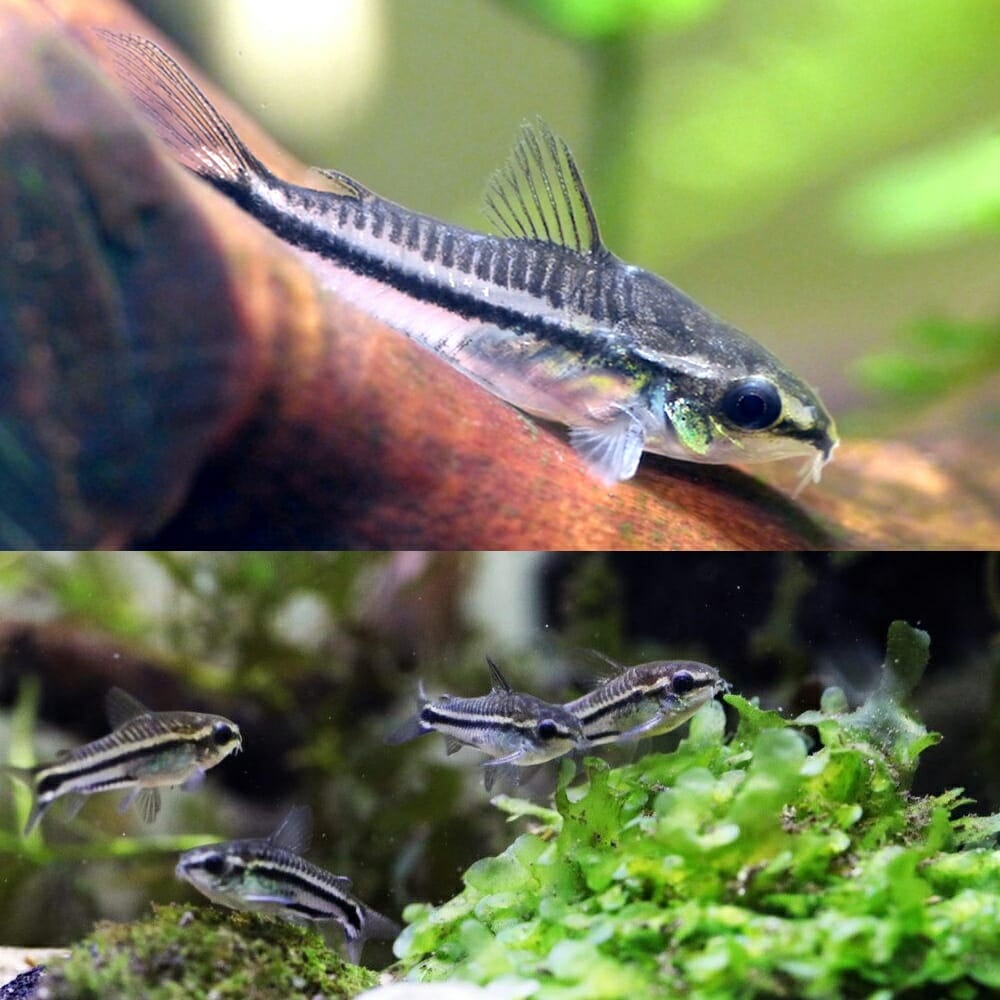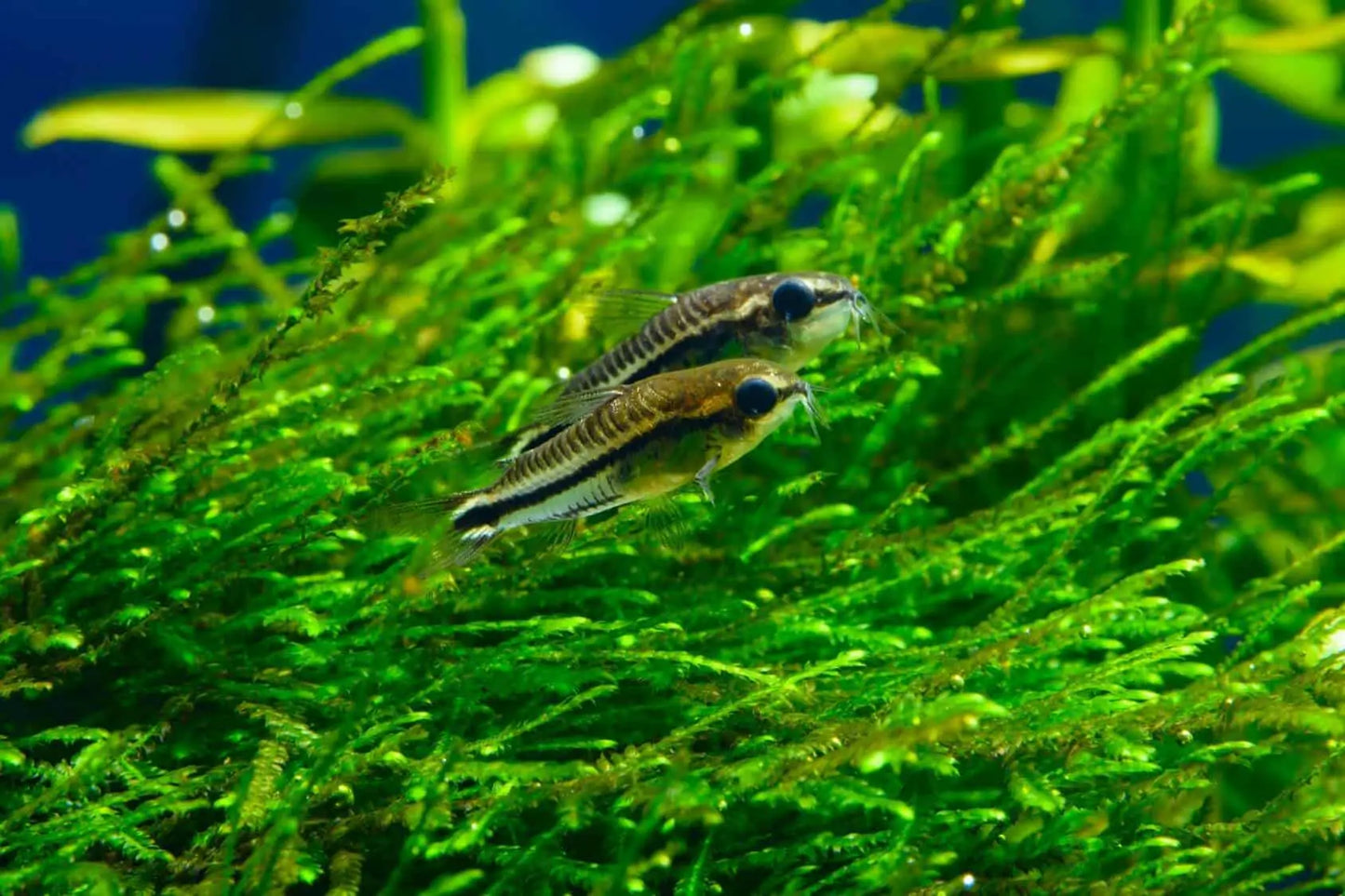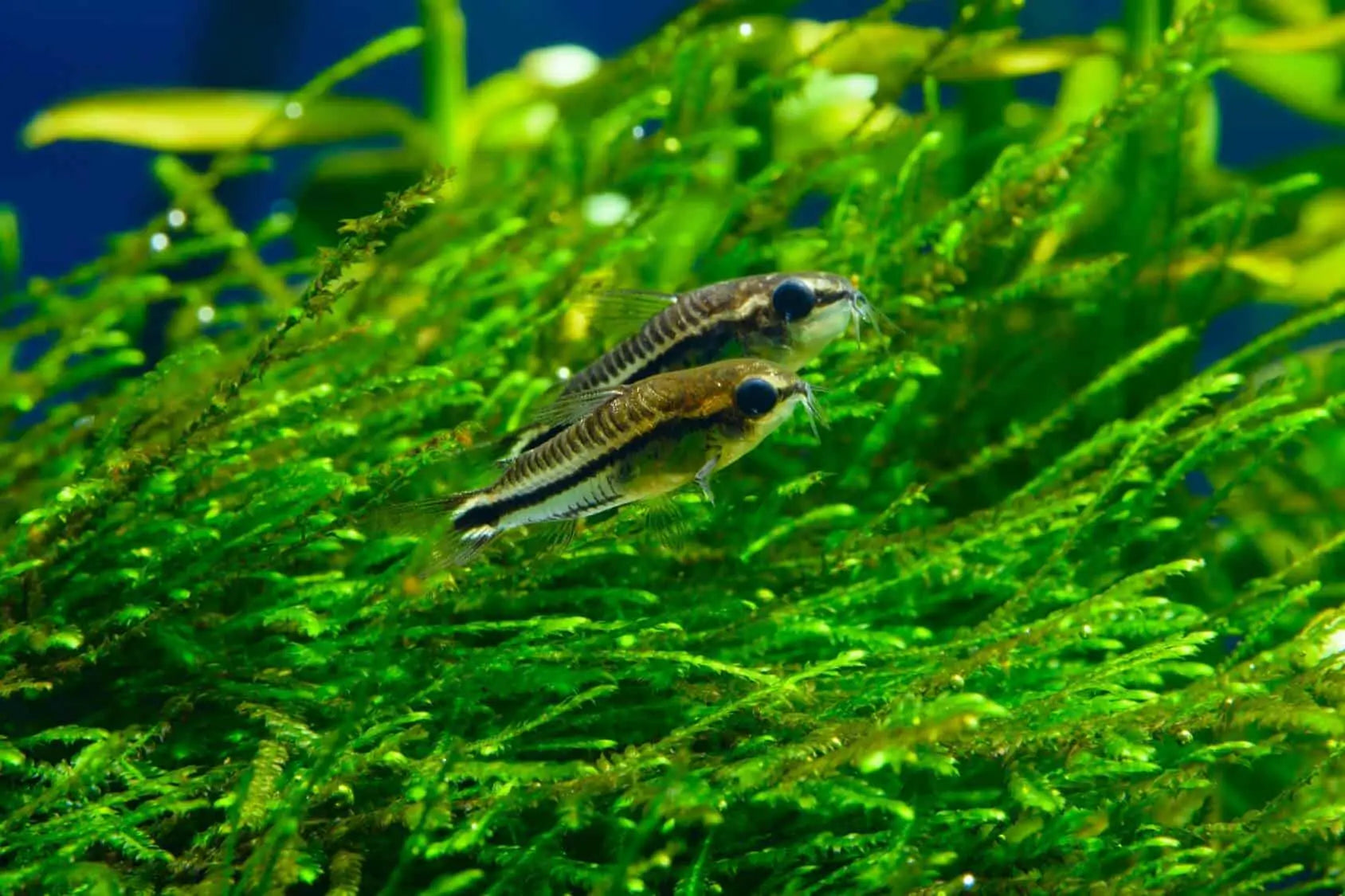Corydora - Pygmy (Corydoras pygmaeus)
Corydora - Pygmy (Corydoras pygmaeus)
Couldn't load pickup availability
Around 1.2″ (3cm).
You could keep quite a large group of these in a tank measuring only 18″ x 12″ x 12″ (45cm x 30cm x 30cm) – 42.5 litres.
Prefers dim lighting. It looks superb in a heavily planted setup decorated with pieces of bogwood and twisted roots, perhaps with a layer of surface vegetation to dim the lighting a touch.
It can also be kept in an Amazonian biotope setup if you wish. Use a substrate of river sand and add a few driftwood branches (if you can’t find driftwood of the desired shape, common beech is safe to use if thoroughly dried and stripped of bark) and twisted roots. Aquatic plants should not be used. A few handfuls of dried leaves (again beech is good, and oak is also suitable) would complete the natural feel. Allow the wood and leaves to stain the water the colour of weak tea, removing old leaves and replacing them every few weeks so they don’t rot and foul the water. A small net bag filled with aquarium-safe peat can be added to the filter to aid in the simulation of black water conditions. The lighting should be fairly dim in this kind of setup.
Water Conditions
Temperature: 72 to 79°F (22 to 26°C)
pH: 6.4 to 7.4
Hardness: 2 to 15°H
Diet
Any food offered must be small enough for its tiny mouth. It will take dried foods, but these should be of a small grade or ground down before being added to the tank. For the fish to develop the best colour and condition a good proportion of the diet should also consist of small live and frozen foods such as sifted Daphnia or Artemia nauplii.
It’s very peaceful, but doesn’t make an ideal community fish due to its small adult size. It’s easily intimidated by larger tank mates and won’t compete well for food with them. Many fish often kept in community aquaria, such as angelfish, gouramis and larger catfish will also find it an ideal snack. Keep it alone or in a communityof other tiny species, such as similarly sized characins, cyprinids or perhaps some small freshwater shrimp. It also makes an ideal dither species for Apistogramma and other dwarf cichlids, as it tends to inhabit the middle levels of the tank.
It lives in groups in nature so it’s best to buy at least 6, preferably 10 or more. You’ll find they shoal quite tightly, have more confidence and look much more effective when maintained in good numbers. They’ll also school quite happily with other small fish in the tank. Like most corys, it’s easily sexed when viewed from above. Females are noticeably rounder and broader bodied than males, especially when full of eggs. They’re often also slightly larger.
Share



